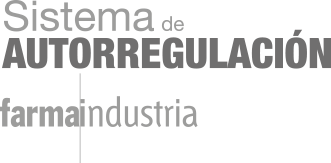Anexo V - CONSULTAS (preguntas y respuestas) sobre la interpretación del Código de Buenas Prácticas
ARTÍCULO 17. INTERRELACIÓN CON ORGANIZACIONES DE PACIENTES
88. Los materiales o publicaciones dirigidos a pacientes patrocinados por una compañía farmacéutica ¿se puede incluir un apartado relativo a tratamientos?, en caso afirmativo ¿qué requisitos se deben cumplir?
Los materiales o publicaciones dirigidos a pacientes pueden estar relacionados con la salud de los pacientes, con enfermedades concretas, con medidas higiénico-sanitarias, con o con hábitos saludables. En definitiva, son materiales que deben servir para ayudar al paciente a entender mejor el desarrollo de su enfermedad y mejorar su calidad de vida.
Su contenido, redacción, diseño y características en general debe evidenciar de forma clara su objetivo y finalidad principal: una herramienta de apoyo para las personas afectadas por una determinada enfermedad. En todo caso, incluirán de manera visible mensajes advirtiendo: (i) que no puede interpretarse que su contenido puede sustituir al diagnóstico realizado por un Profesional Sanitario y que ante cualquier duda respecto a su contenido deben dirigirse a su Profesional Sanitario y (ii) que se trata de una publicación de carácter orientativo y divulgativo, por lo que el lector no debe someterse a tratamientos ni seguir consejos sin dirigirse antes a un Profesional Sanitario.
En el supuesto de que este tipo de materiales formativos y/o informativos incluyan un apartado relativo a tratamientos, se recomienda cumplir adicionalmente los siguientes requisitos:
- Incluir información equilibrada, veraz y objetiva, respecto de los tratamientos disponibles autorizados, para el tratamiento de la patología a la que hacen referencia.
- La referencia a los tratamientos disponibles se hará de forma general. Por ejemplo, en el caso de que existan medicamentos autorizados deberán hacerse referencia a éstos como “tratamiento farmacológico”. No deben incluir referencias a medicamentos concretos, principios activos, marcas comerciales o similar.
- Contar con una pluralidad de patrocinadores o colaboradores (por ejemplo: autoridades sanitarias, compañías farmacéuticas, Organizaciones de Pacientes, sociedades científicas, compañías pertenecientes a otros sectores, etc.)
- El contenido, redacción, diseño y características del material no genere dudas respecto a los destinatarios del mismo (pacientes) y la naturaleza, carácter y finalidad formativa y/o informativa del mismo (no promocional).
- En el caso de que estos materiales o publicaciones vayan a ser distribuidos en centros sanitarios públicos, compartir previamente su contenido con las autoridades sanitarias.
89. ¿Pueden las compañías farmacéuticas patrocinar y colaborar con las actividades deportivas de carácter solidario realizadas o promovidas por las Organizaciones de Pacientes?
Uno de los objetivos del Código es el de garantizar que la interrelación de las compañías farmacéuticas con las Organizaciones de Pacientes se lleva a cabo bajo los más estrictos principios éticos de profesionalidad y responsabilidad.
En este sentido, es necesario diferenciar las actividades de las Organizaciones de Pacientes que se encuentran dirigidas a pacientes y sus cuidadores y que tienen una finalidad y carácter formativo e informativo (reguladas en el artículo 17.8 del Código), de aquellas otras actividades dirigidas a la población en general y que tienen una finalidad y carácter benéfico o solidario.
En la medida que la Organización de Pacientes adopte las medidas necesarias para mantener y respetar dicha distinción, las compañías farmacéuticas podrán colaborar con las actividades deportivas de carácter solidario. En todo caso, el patrocinio o colaboración deberá ser corporativo o institucional.
